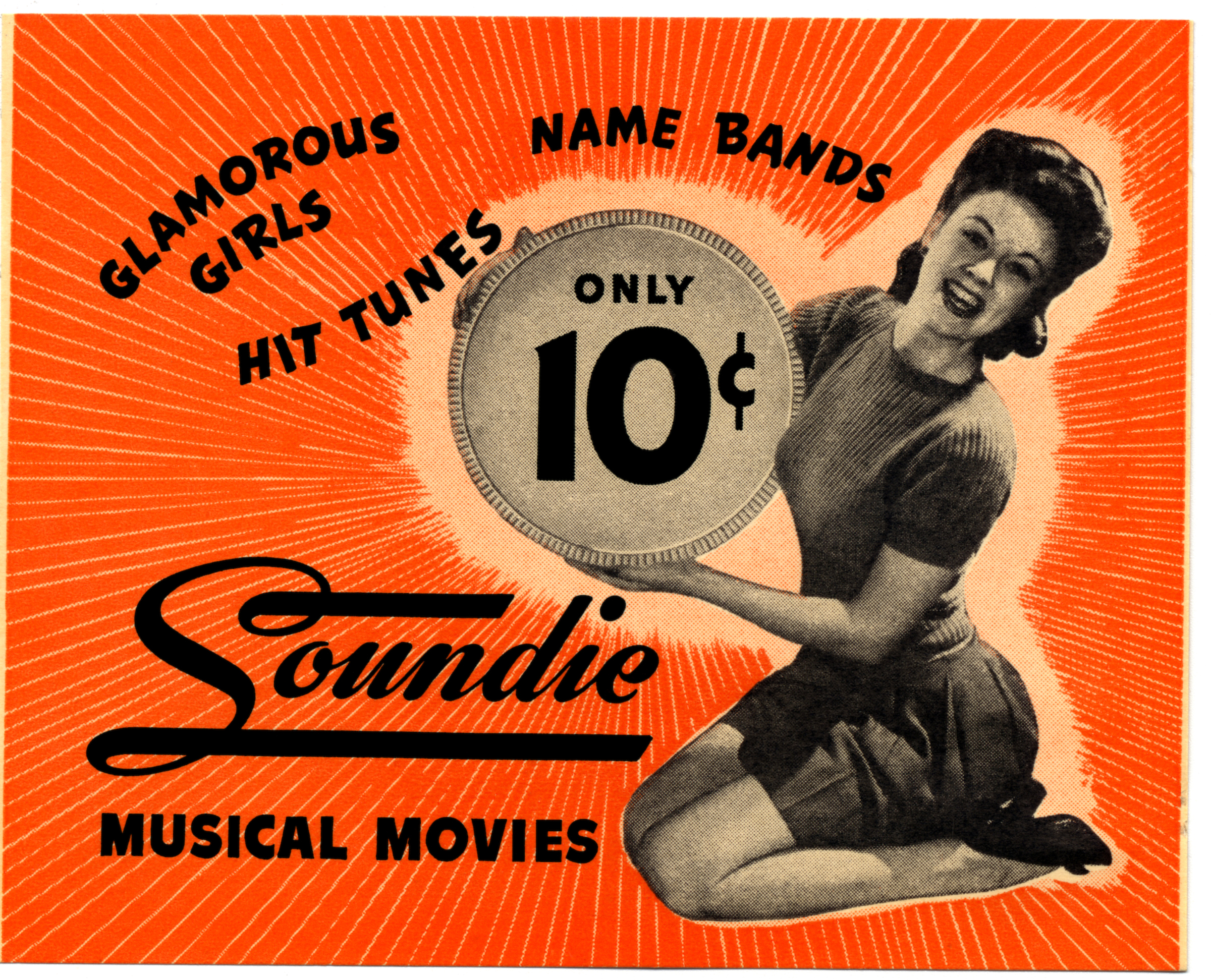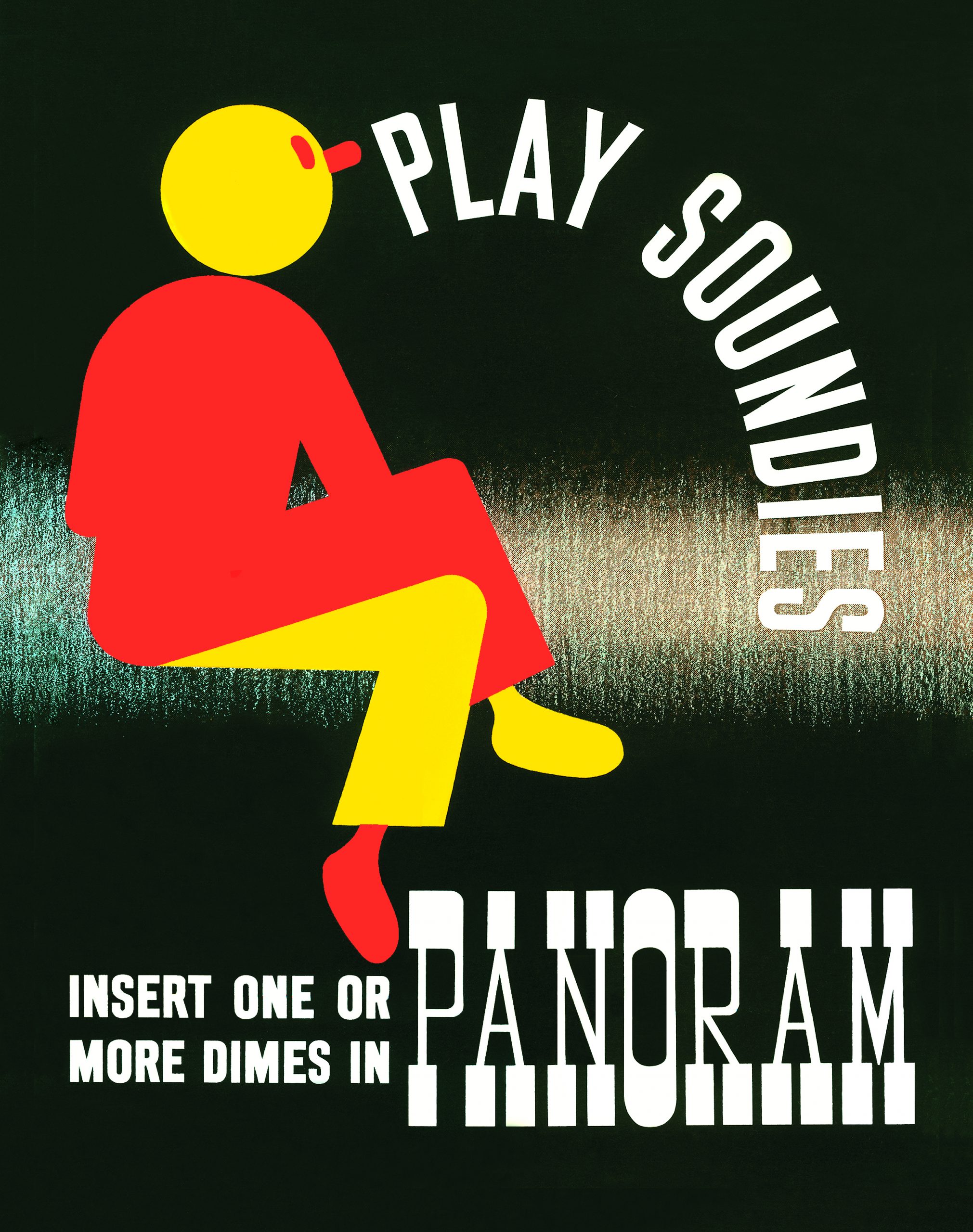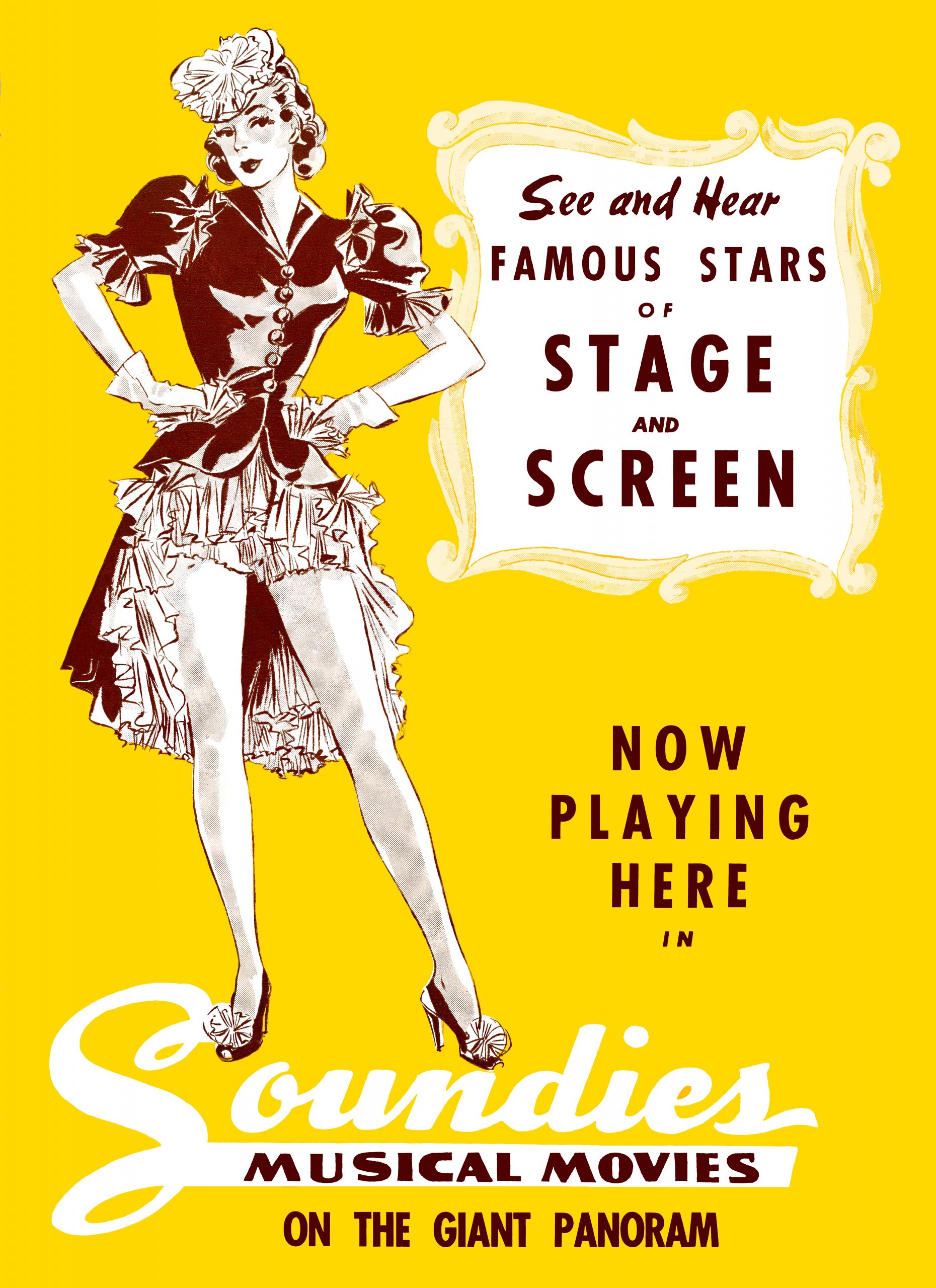INTRODUCTION
While the synchronization between image and sound has never been a strength of most SOUNDIES, rarely does the lack of “sync” seriously affect one’s enjoyment of these films, at least from this viewer’s perspective. As film historian Leonard Maltin has noted, “It seems as if SOUNDIES directors did not know the phrase ‘take two,’” and this may indeed be the case. The economic imperative was strong where the production of these films was concerned. But even among the worst of cases, where synchronization is all but nonexistent, there can be significant discographical information to uncover, and this is certainly the case with this series of three films featuring The Sun Tan Four and the Sun Tan Band!
“Fritz” Pollard and the Sun Tan Studios
The name of the featured combo — The Sun Tan Four in two SOUNDIES, and a slightly larger Sun Tan Band in the third — is taken from the Sun Tan Studios, the most important Harlem-based talent agency in the 1940s. Sun Tan Studios was established by Frederick Douglas “Fritz” Pollard in the early 1940s, and his career is covered in John Carroll’s Fritz Pollard – Pioneer in Racial Advancement (University of Illinois Press, 1998). The focus of the biography is Pollard’s athletic career, and unfortunately Pollard’s work in the entertainment field is poorly researched. What we do know is that in the early 1940s Pollard formed Sun Tan Studios to place black talent in nightclubs and on stage in New York City, Philadelphia and other major locations along the East Coast. Carroll claims that Pollard provided talent for the “Fats” Waller SOUNDIES produced in September 1941, although this conflicts with other assertions that the agency was formed in 1942. Other citations by Carroll to the contrary, it does not appear that Pollard either produced or directed any juke box shorts; and while he may have been closely involved with procuring talent for these films, it is likely that his ties to Soundies Distributing Corporation of America, and William Forrest Crouch of Filmcraft Productions, was more informal and casual than Carroll suggests.
By early 1946 it must have been clear to the executives at Mills Novelty Company that their long term plans for SOUNDIES were not realistic. They began inserting more reissue SOUNDIES into each weekly release of eight films — at one point there were six reissues to two new releases — and increased other cost cutting measures. This included the production of dance routines utilizing music from sources that would not require a new recording session.
THE SOUNDTRACKS
The soundtracks for the three SOUNDIES in this series come from three separate sources. The first soundtrack, and most easily identified, is Cecil Scott and his Orchestra. “Mr. X Blues” was originally recorded on January 29, 1945, and was released as such as a band performance with the Cecil Scott orchestra on screen. In its “re-use” the film is titled “Boogiemania.” The big band’s personnel includes the following, with the soloists being Scott on tenor sax, Harry Goodwin on trumpet, Jonas Walker on trombone and probably Alan Miler on alto sax.
Cecil Scott, tenor sax and leader; Harry Goodwin, Courtney Williams, Gus Aiken + one unidentified, trumpets; Jonas Walker, Ed Cuffee, trombones; Al Campbell, Alan “Poopsie” Miller, alto saxes; Butch Robinson + one unidentified, tenor sax; unidentified baritone sax; unidentified piano; Nat Woodley, string bass; Harold “Sonny” Austin, drums
The second soundtrack, used in the SOUNDIE “The Pollard Jump,” was long a mystery, with the key to the identification of the recording group provided by Dan Morgenstern. At a screening some years ago in New York City, Morgenstern aurally identified the trombone soloist as Leo “Snub” Mosely. This fact neatly dovetailed with the existence of a recording contract dated January 7, 1945, for which SOUNDIES had never been located. The personnel noted on the contract included Leo “Snub” Mosely, trombone and leader; Bob Carroll, trumpet; William Johnson, alto sax; Jimmy Robinson, piano; Lloyd Trotman, string bass; A.G. Godley, drums. The trumpet solo is consistent with other recordings by Carroll from this period. Yves Francois provided background information that confirmed William (Bill) Johnson on alto sax, and Anthony Barnett subsequently confirmed the presence of Godley on drums.
The third soundtrack, used on “Sun Tan Strut,” is from a currently unidentified source. The band is composed of trumpet, clarinet, alto sax, tenor sax, piano, guitar, string bass and drums. The combo certainly swings, the solos are more than competent and, if I may be so bold, the combo sounds black. Not surprisingly, the tune played is a public domain item, Anton Rubinstein’s Melody In F; not having to pay publishers synchronization fees for the use of the song would have been a big plus for SOUNDIES producers!
The Sun Tan Four and Sun Tan Band
The sideline bands in this series of three SOUNDIES are composed of four musicians, or five in the final film. In all cases, however, it is visually incongruous to see a band of four or five musicians supposedly producing the music played by a group as large as Cecil Scott’s 15 piece orchestra. It is even stranger to see a solo on trumpet while hearing a trombone on soundtrack. But if the synchronization is way off, the musicians in the band, three of whom have been identified, are not without interest.
The leader of the band is none other than “Fritz” Pollard himself, head of the Sun Tan Studios. There is nothing to suggest that he is a pianist (he was not a member of the New York chapter of the American Federation of Musicians local 802), and his role here is merely as a sideline performer.
The trumpet player, on the other hand, is an important, if minor, figure in jazz, having been a member of the Count Basie orchestra that took the jazz world by storm in 1936. Joe Keyes recorded with the Blanche Calloway orchestra in 1931, and joined Bennie Moten, appearing on record on the seminal 1932 recording session for Victor. Keyes was with the Basie orchestra through February 1937, being replaced at that time by Ed Lewis and Bobby Moore. Keyes surfaced on later recordings with Eddie Durham and “Lips” Page, and was presumably working in the New York area during the late 1930s and 1940s.
Of alto player Allen Jackson nothing is known, save for the fact, provided by Theo Zwicky, that he led a band at The Swing Rendezvous in 1944. He is, however, a fine improviser, slightly in the mold of Benny Carter.
The guitar, string bass and drummer appear very familiar but are unidentified to this point in time.
The Dancers
Featured jitterbug dancers Helen Bangs and Albert Reese Jones were probably Fritz Pollard protégées, although beyond this conjecture nothing else is known of their careers. They are not mentioned in Franz Hoffman’s compendium of advertisements from the New York black and white press during this period, and this is probably their only film appearance.
The other dancers in this series, Nicky (or Nickie) O’Daniel and Hortense “The Body” Allen (billed by just her first name in Sun Tan Strut), were also almost certainly supplied by the Sun Tan Studios. Both were talents and popular dancers who can also be seen in black cast films, as well as in other SOUNDIES, produced during the mid-to-late 1940s.
Nickey O’Daniel’s first public notice seems to come from a revue produced by Ed Sullivan, presented at the Ritz Theater in May 1942. Running for only 49 performances, Harlem Cavalcade featured a large number of important black entertainers, including Noble Sissle (who co-directed the presentation with Sullivan), Irvin C. Miller, Una Mae Carlisle, Tim Moore, Amanda Randolph and Flournoy Miller. O’Daniel appeared in the revue as a member of the dance troupe choreographed by Leonard Harper billed as “Harper’s Harlemaniacs.”
Three years later O’Daniel portrayed the title role in the Louis Jordan black cast short Caldonia (Adams Productions, 19455) and, during the same year, was featured in It Happened In Harlem (All American New, 1945). One year later she was seen in the Billy Eckstine featurette Rhythm In A Riff (Alexander Productions, 1946). Between 1943 and 1946 she also seen in six additional SOUNDIES, all black cast shorts produced in New York City.
Hortence “The Body” Allen appeared on stage in both Chicago and New York during the mid 1940’s. In an undated Internet interview Allen is quoted as saying, “I got the name ‘the Body’ through Peg Leg Bates. The majority of exotic dancers, they have the name Princess So-and-So and So-and-So. I said, ‘No, my name is Hortense, and I ain’t no Princess So-and-So. Now, they just coming to see an act.’ So Peg Leg Bates started calling me, ‘Hortense ‘the Body’ Allen.’ So I picked up the name.”
According to various online sources, Allen was a producer of revues, and a choreographer of some note, this by the time she was in her twenties. In the 1940s Allen found work in both Chicago and Harlem nightclubs. In a telephone interview (November 2, 2009) black entertainment historian Delilah Jackson noted, “Hortence Allen was one of the most gifted black dancers during that period. She was almost almost 6’, married to a detective, if I remember correctly. She could do a lot of steps that others couldn’t do, and she shared her routine in clubs and at places like the Apollo.” Just prior to the production of this SOUNDIE Allen had been working in Chicago, and had been booked at such venues, and in such shows, as the Rhumboogie Club (May 1945), and The Atlantic City Follies of 1946 (presented at the Corpus Christi Auditorium in November 1945). In January and February 1948 Allen appeared in the Beige Room of the Pershing Hotel, dancing in presentations produced by Larry Steel, and probably choreographed by Allen. Hortence Allen was the first African-American woman to bring a chorus line to the Paramount Theater on Broadway, this probably in the 1950s.
In addition to her appearance in this SOUNDIE, Hortence Allen can also be seen in Rhythm In A Riff (Alexander Productions, 1946).
EVALUATION
These three SOUNDIES cannot be seen as major films by any stretch of the imagination, although they should be known for something other than the dismal sync, or lack of information about them. At the very least, we have the opportunity to see on screen some fairly obscure Harlem talent and to hear, on one soundtrack, a previously unknown Snub Mosely recording. The dance routines are enjoyable, and representative of what might be seen in smaller Harlem clubs during the mid 1940s. In summary, not major SOUNDIES, perhaps, but one can do far worse!



